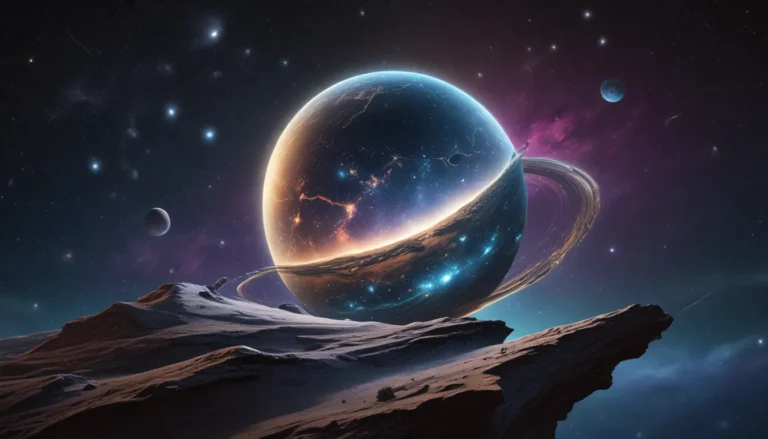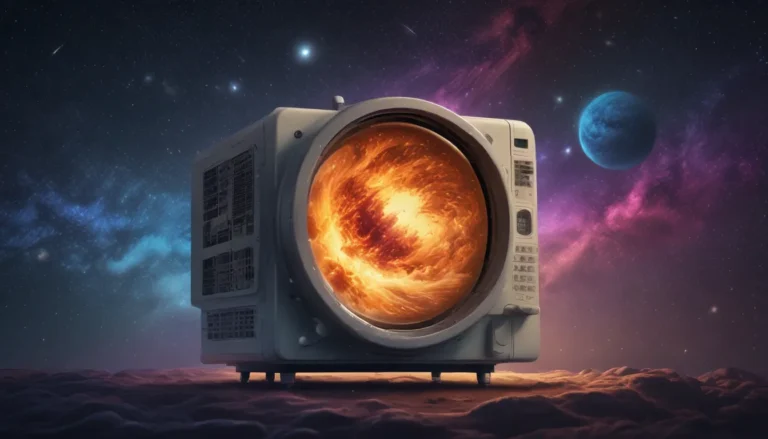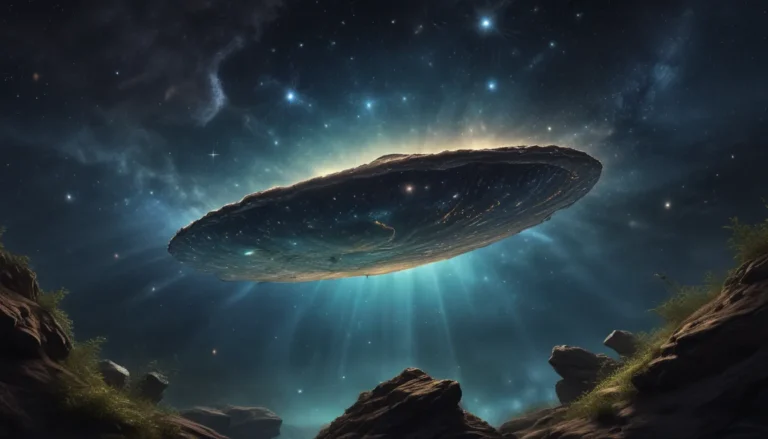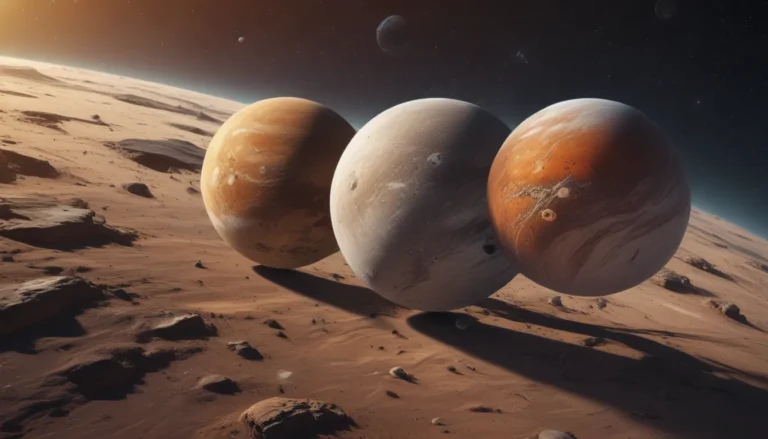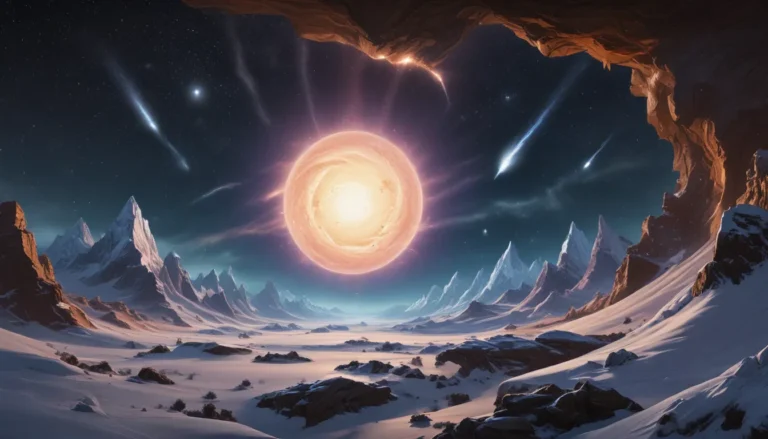The pictures we use in our articles might not show exactly what the words say. We choose these pictures to make you interested in reading more. The pictures work together with the words but don’t take their place. The words still tell you the important facts.
Gravity waves, also known as gravitational waves, are a captivating phenomenon that has intrigued scientists for decades. These elusive ripples in the fabric of spacetime were first theorized by Albert Einstein in his general theory of relativity over a century ago, but it wasn't until 2015 that scientists were able to directly detect them. This groundbreaking discovery has revolutionized our understanding of the universe and continues to provide valuable insights into some of the most enigmatic celestial objects and events.
Unveiling the Mysteries of Gravity Waves
Gravity waves are like cosmic ripples caused by massive events in space, offering a glimpse into the secrets of the universe, from black hole mergers to the dynamics of spacetime. The detection of gravity waves in 2015 was a monumental achievement in the scientific world, leading to new technologies and a deeper understanding of the universe's most captivating phenomena.
The Theory of General Relativity
Albert Einstein's Theory of General Relativity laid the foundation for our understanding of gravity waves. This revolutionary theory transformed our perspective on gravity and the fabric of spacetime, setting the stage for the discovery of these cosmic ripples.
Decoding Gravity Waves
Gravity waves are essentially ripples in the fabric of spacetime caused by the acceleration of massive objects in the universe. They resemble the ripples on the surface of a pond when a stone is dropped into it, but on a cosmic scale.
A Landmark Discovery in 2015
In 2015, the Laser Interferometer Gravitational-Wave Observatory (LIGO) made history by directly detecting gravity waves for the first time. This milestone confirmed Einstein's prediction and provided scientists with a new way to observe and explore the cosmos.
Cosmic Cataclysms and Gravity Waves
Cataclysmic events in the universe, such as the collision of black holes or the explosive deaths of massive stars in supernovae, generate gravity waves. These events send out ripples through spacetime, carrying valuable information about the universe's most dramatic events.
The Dance of Spacetime
Gravity waves cause spacetime to stretch and squeeze as they pass through, resulting in tiny fluctuations in the distances between objects. Despite their cosmic significance, these fluctuations are incredibly small, measuring only a fraction of the width of an atomic nucleus.
Speeding Through the Cosmos
Traveling at the speed of light, gravity waves move at an astonishing pace of approximately 299,792,458 meters per second. This incredible speed allows them to traverse vast cosmic distances, carrying messages from the far reaches of the universe.
Evidence of the Unseen
Prior to the direct detection of gravity waves, astronomers relied on indirect evidence, such as the effects on the orbits of binary pulsars, to support the existence of these elusive waves. The discovery in 2015 provided concrete proof of their existence.
Sensitivity of LIGO
The LIGO detectors are incredibly sensitive, capable of detecting gravity waves that cause distortions in the fabric of spacetime as small as one-thousandth the diameter of a proton. This remarkable precision has enabled scientists to observe cosmic phenomena in unprecedented detail.
Black Hole Mergers and Gravity Waves
One of the most spectacular events detected by LIGO was the merger of two black holes, which produced a gravitational wave signal that traveled across the universe. This event shed light on the cosmic dance of massive objects in the cosmos.
Embracing Multimessenger Astronomy
Gravity wave detections have ushered in a new era of multimessenger astronomy, where scientists combine information from gravity waves with other forms of electromagnetic radiation to gain a comprehensive understanding of the universe. This approach provides a more holistic view of cosmic phenomena.
Collaborative Observatories
In addition to LIGO, other gravity wave observatories, such as VIRGO in Italy and KAGRA in Japan, have joined the global network, enhancing the ability to pinpoint the sources of these cosmic disturbances. This collaborative effort has expanded the reach of gravity wave research.
Charting the Cosmos
By studying gravity wave signals from various sources, scientists can map the distribution of massive objects in the universe and gain insights into the formation and evolution of galaxies, black holes, and other celestial bodies. This mapping offers a unique perspective on the cosmic landscape.
The Symphony of Gravity Waves
The loudest gravity wave detected to date was generated by the final moments of the merger of two black holes. During this violent event, an immense amount of energy was converted into gravitational waves, creating a cosmic symphony that reverberated through the cosmos.
Driving Technological Advancements
The detection and study of gravity waves have spurred advancements in laser interferometry, cryogenics, and other technologies, pushing the boundaries of scientific capabilities. These technologies have opened up new horizons in our exploration of the universe.
Celebrating Scientific Milestones
The first direct detection of gravity waves in 2015 was celebrated as one of the most significant scientific achievements of the century, earning the scientists involved the prestigious Nobel Prize in Physics in 2017. This recognition highlighted the importance of gravity wave research in expanding our understanding of the cosmos.
Unlocking the Universe’s Secrets
Studying gravity waves allows scientists to delve into the hidden corners of the universe, providing insights into the nature of gravity, the dynamics of spacetime, and the mysteries of the cosmos. Each discovery brings us closer to unraveling the secrets of the universe.
Concluding Thoughts
Gravity waves represent a fascinating frontier in astrophysics, offering a window into the cosmic symphony of the universe. Their discovery and ongoing study have opened new doors to exploration and discovery in the realm of gravitational waves. As we continue to expand our knowledge of gravity waves, we pave the way for groundbreaking advancements in our understanding of the universe.
FAQs
-
What are gravity waves?
Gravity waves are ripples in spacetime that emanate from accelerating masses, such as colliding black holes or neutron stars. -
How were gravity waves discovered?
Gravity waves were first directly detected in 2015 by the Laser Interferometer Gravitational-Wave Observatory (LIGO) through the measurement of spacetime distortions caused by the merger of two black holes. -
What is the significance of gravity wave detection?
Gravity wave detection provides a new way of observing and studying the universe, enabling scientists to explore previously inaccessible phenomena and validate Einstein's general theory of relativity. -
Can gravity waves be heard?
Gravity waves are not audible as they are disturbances in spacetime, not sound waves. However, they can be translated into sound waves for perception. -
Are gravity waves harmful to Earth?
Gravity waves detected by LIGO do not have any harmful effects on Earth, as they are extremely weak by the time they reach us and require sophisticated instruments for detection.
Gravity waves offer a glimpse into the awe-inspiring complexity of the universe, inviting us to explore its mysteries and marvel at its beauty. Through the study of these cosmic ripples, we embark on a journey of discovery that reveals the intricate tapestry of the cosmos. Join us in unraveling the wonders of gravity waves and uncovering the secrets of the universe.

